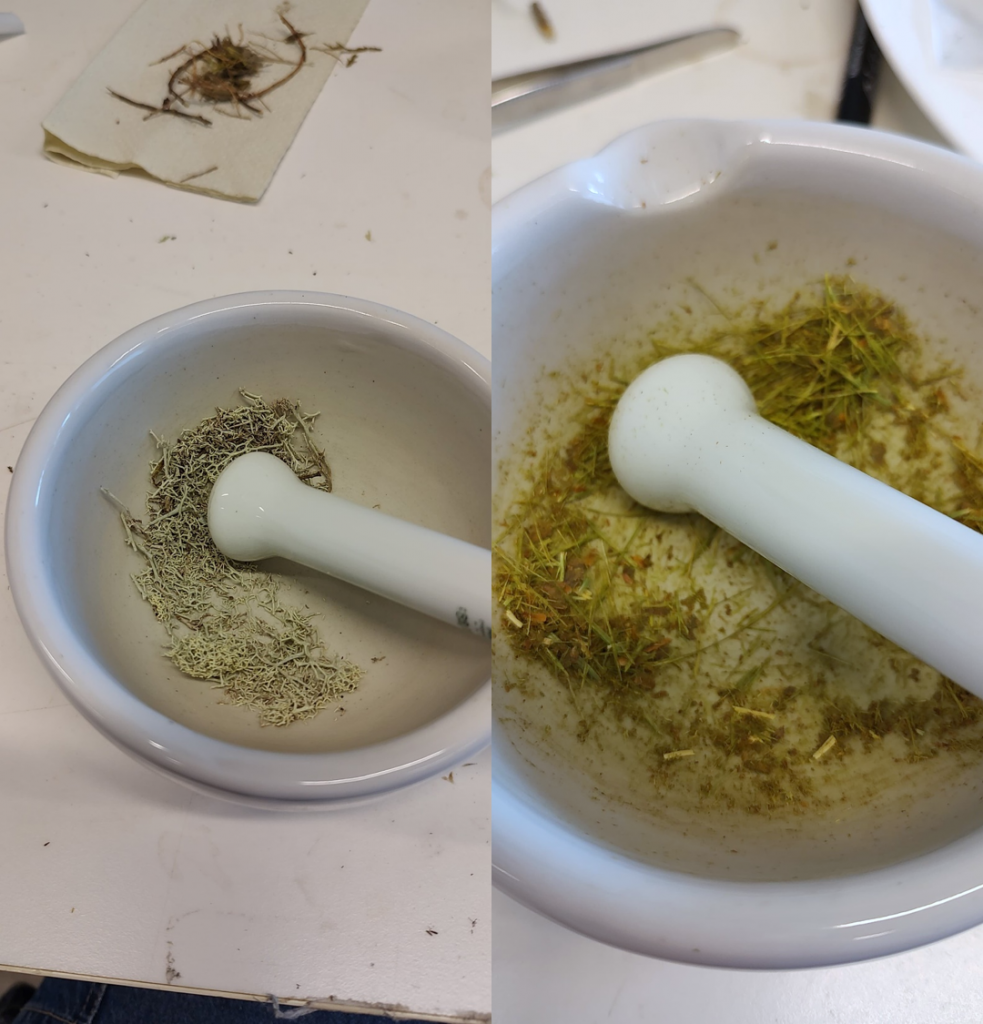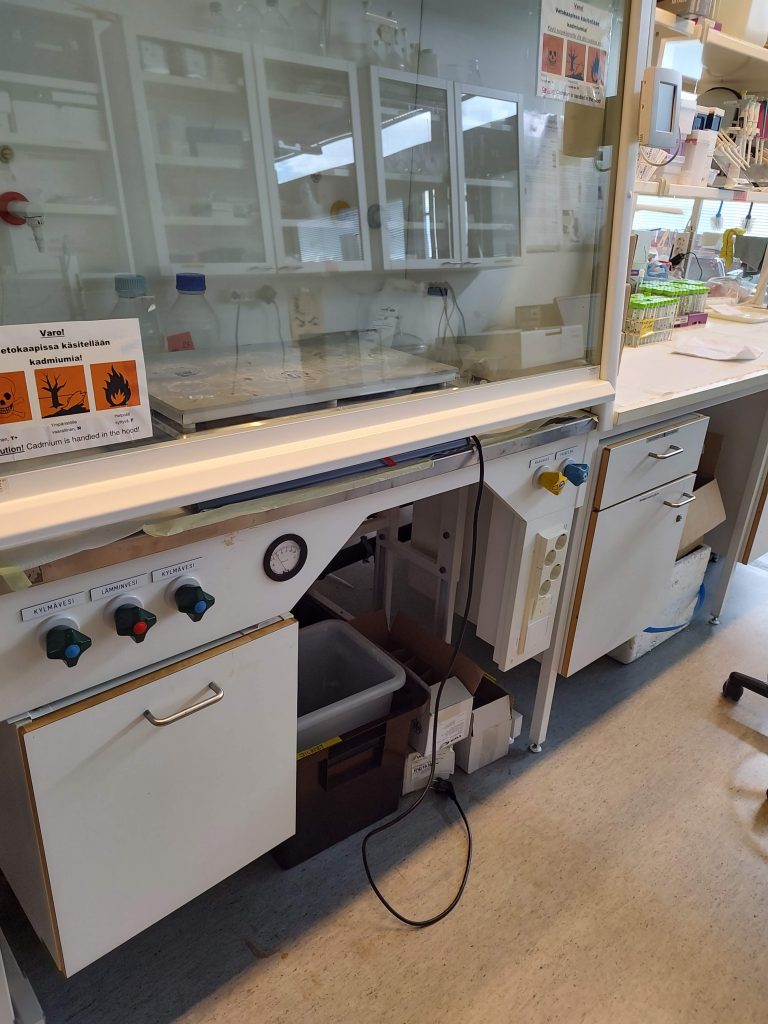by Anna Leppänen
I had the pleasure of working as a summer research assistant with the Heikkilä Research Group this past July, assisting doctoral researcher Lilia Orozco in the laboratory and data searches. Lilia is studying the relationship between sea-ice cover, hydroclimate and lake ecosystems through elemental and stable isotopic tracers from lake sediment archives, as part of the SLEET project funded by the Academy of Finland. The alarming rate of Arctic warming is coupled by an overall increase of precipitation in the form of rain, which is likely to modify lake levels, catchment-derived inputs and aquatic carbon cycling. In order to better understand how lake ecosystems might respond, Lilia is looking into the past. She uses the tracers found in the sediment cores, and the understanding she is gaining from analysing the biogeochemical fingerprints of modern organic matter sources, including aquatic algae, macrophytes, catchment vegetation and soils. My job was to process the vegetation and soil samples collected by Lilia earlier in the summer from and around Lake Papinjärvi in Oulu, Finland, as well as to assist with other current matters in her research project.
I prepared 80+ samples for measuring elemental content and stable isotopic composition of carbon (C) and nitrogen (N) via EA-IRMS, which stands for elemental analyser coupled with isotope ratio mass spectrometer. First, I used the freeze dryer to dry the vegetation and soil samples down to a brittle state that would be easy to grind with a pestle and mortar. The samples had to be very fine to be sent off for further laboratory analysis. Then, the grinding. It was the longest process; many of the samples took 1-2 hours to grind because they were very fibrous, such as macrophytes growing in the lake. Some of the others would only took about 20-30 minutes to grind, such as mosses. Listening to podcasts, music and audiobooks helped to pass the time. Towards the end of the job, my hand was starting to cramp, and I had blisters on my fingers from where I held the pestle, but I kept going to finish grinding all 80+ samples.

One of my other tasks was to make three diatom slides for Lilia to analyse under a light microscope as a part of the project for getting a grasp of the development of the lake basin. This was one of my favourite parts of the summer job, as I am interested in studying diatoms myself and wanted to learn more about the process of making slides. When they were finished, Lilia said they were great slides, so I suppose that was not bad at all for a first attempt!

I also did some research on environmental datasets from the Finnish Environment Institute (SYKE) about Lake Papinjärvi, which I then translated into English and made an Excel file with the collated data. I examined past monitored environmental data on the water quality, the aquatic life, and the surrounding vegetation of Lake Papinjärvi.
Overall, I really enjoyed the experience because I gained many new skills such as data processing and diatom slide preparation, and a general insight into the world of research. This also gave me the opportunity to see a little what it was like to be a PhD student and further demonstrated that it was an option for me to take in the future. I also liked being part of the University community in a way that I had not experienced before, as I was acting as more of an employee than a student. I really recommend getting a summer job at the University if you can!
Anna is a MSc student about to start her thesis investigating new ways of studying past sea ice variability.
The priceless additional hands and brains
P.S. by Maija and Lilia
Research assistants typically get their salaries from project money and participate in short-term field campaigns, sample handling and treatments in the laboratory – and sometimes more specific tasks such as data mining or microscopy. They are the hidden reserve that make the steps in research progress smoother and faster, while perking the atmosphere with their enthusiasm.
From the doctoral researcher’s point of view, having research assistance provides more time to focus on data analyses and interpretation, and manuscript writing. Lilia comments: “I felt more relaxed to take time off knowing Anna was taking care of the sample handling. Her help allowed me to work on the essential parts of the research and recharge energy by enjoying the summer. Thank you Anna, for your valuable help in the lab!”
